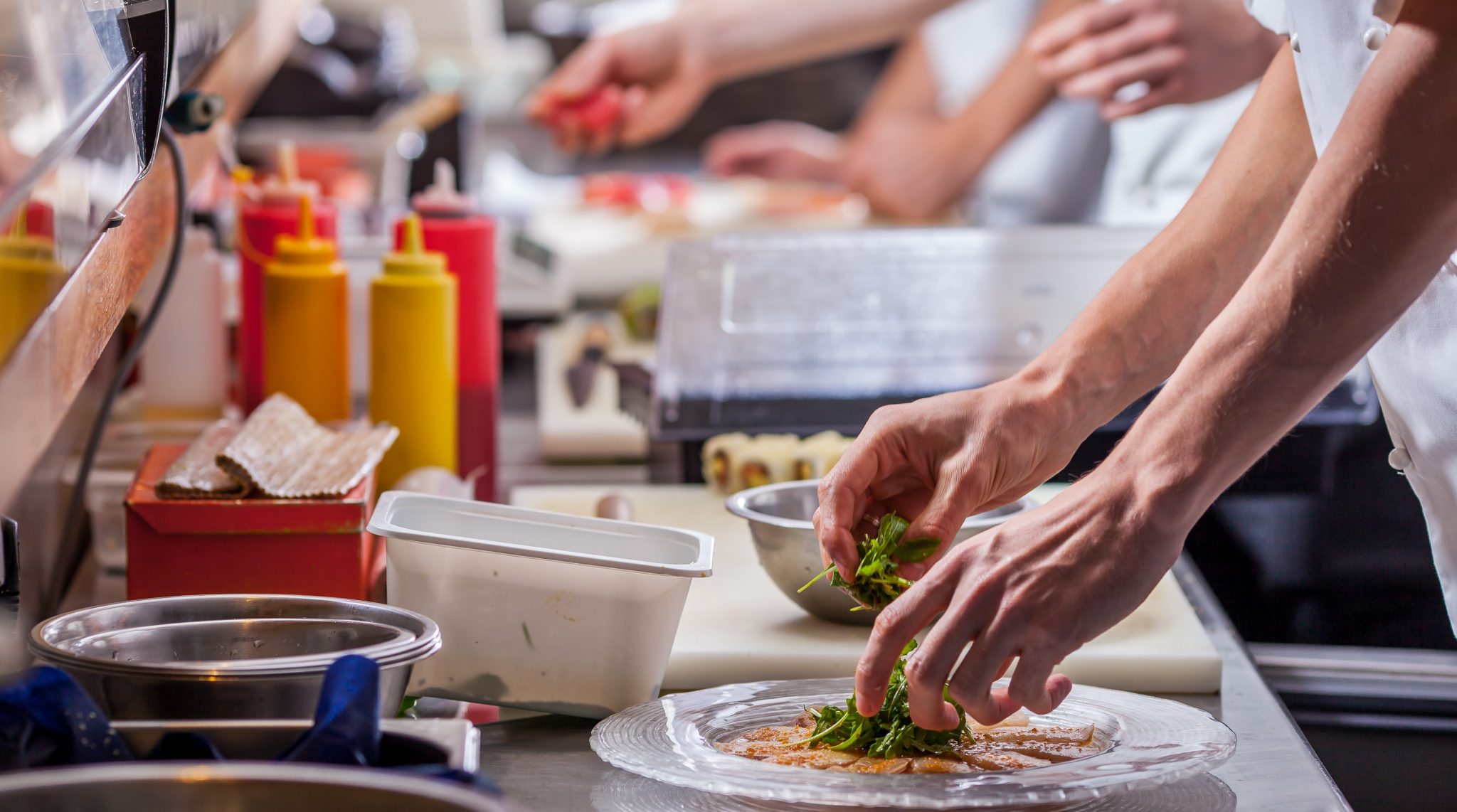Wasting food is a problem. Approximately a third of all food is wasted globally, and the EPA estimates 15% of that waste is coming from the restaurant industry. That’s 39.7 million tons of food that could have been consumed, recycled, or composted
Those numbers may be disheartening, but there is an opportunity here: 95% of all restaurant waste can be recycled or composted, so it’s only a matter of following through with those processes.
The restaurant industry operates on tight margins and even tighter timetables, but incorporating waste-conscious practices is well worth it. Here are some of the ways that restaurants can be sustainable without breaking the bank:
Waste Prevention
The Menu
The best way to reduce food waste is to plan ahead and be proactive (instead of reactive) by streamlining your menu. Choosing dishes that work with one another reduces the variety of items needed in the kitchen, and also leads to a more efficient workspace. For example, if a dish calls for lemons, use the peels for cocktails. Day-old bread can be turned into croutons or stuffing, and veggie scraps can be used in soup bases. By planning your menu this way, you create dishes that complement each other in more than just taste.
Another menu trick for reducing waste comes from where you get your ingredients. Plan dishes that use in-season and local crops. This not only gets you fresh produce and cuts down on transportation costs, but it is also an investment for your community. Plan a series of rotating menus that utilize the in-season products to give your restaurant a unique twist while cutting down on waste. Even if you need to keep a few specialties regardless of season, adding any amount of local seasonality to your menu is a step in the right direction.
Ingredient Management
Letting food go bad is a pointless waste that can easily be avoided. Label and organize ingredients so you use everything in rotation. As long as it is still good, the goal should be to use the backlog of food before the most recent shipment. If you have the facilities and planning to accommodate it, ordering in bulk saves money and waste from extra shipments. Freeze and store what you can to be used later.
Also, don’t be afraid to buy and use “imperfect” fruit and veggies, particularly when it’s an internal ingredient to a dish. These “damaged goods” are the same as their more aesthetically pleasing counterparts, so using them will save you money and reduce the amount of thrown out produce.
The keys to all of these practices are an organized kitchen and a good relationship with local farms.
Portion Control
Not wanting to look stingy, many restaurants serve large portions aimed to more than satisfy all customers. Unfortunately, this leads to a massive amount of wasted food. A solution for this is to offer multiple portion sizes so customers can choose a more fitting amount of food based on what they are looking to eat. Even buffets can make a push for smaller portions and less waste by providing smaller plates and eliminating trays. People naturally will want to fill their plates, regardless if they can reasonably eat all of it, so you need to plan for that.
Data
According to a report by Leanpath, a food waste tracking company, the average restaurant throws out four to ten percent of the food it purchases before it even reaches the customers’ plates, but most restaurant owners couldn’t tell you if they are closer to four or ten percent.
By implementing a system that tracks food use and waste, you can build an understanding of where waste is occurring and work to fix those issues. This can be as detailed as you would like and your employees have time for, but given the hectic nature of most kitchens during the dinner rush, it might be best to aim for a simple approach. Instead of a comprehensive analysis that can become overwhelming, you could break it down into more manageable pieces. Track food waste for only certain steps of preparation, make the adjustments needed, and then move onto the next steps.
Any data is better than no data.
Waste Disposal
Regardless of preparation, there will be food waste. That’s just the nature of the restaurant business. What you do with the waste is just as important as trying to reduce it in the first place. 40 percent of all items in solid waste landfills is organic. That means that 40 percent of our landfills could have been disposed of in a better way. It comes down to understanding your options and following through with using them.
Composting
Composting is the biggest missed opportunity for restaurants. Instead of sending everything to a landfill, composting breaks down organic material like food waste to naturally create nutrient-rich soil—which is perfect for farming the next round of food!
Many disposal systems offer composting options; you just need to take advantage of them. Composting reduces greenhouse gas by emitting less methane into the air and promotes sustainable communities for the long term health of the earth. If there are no convenient composting options available, you can compost on your own or with the help of your local farmers.
Donate
While there are restrictions, donating leftover food is an option. Reach out to your local food bank and see what system they have in place to take donations. For the food not accepted there, you can see if any local farmers will take it for their livestock.
Recycle Cooking Oil
Used fats, oils, and greases can be recycled or even sold depending on the organization. Research what local options are available and take advantage of a possible way to make extra money while helping the earth.
If you are in the restaurant industry, food waste will happen, but you can help mitigate the negatives. Understanding where waste is occurring, planning around it, and disposing of it properly will save you money and reduce the negative effects of food waste.




